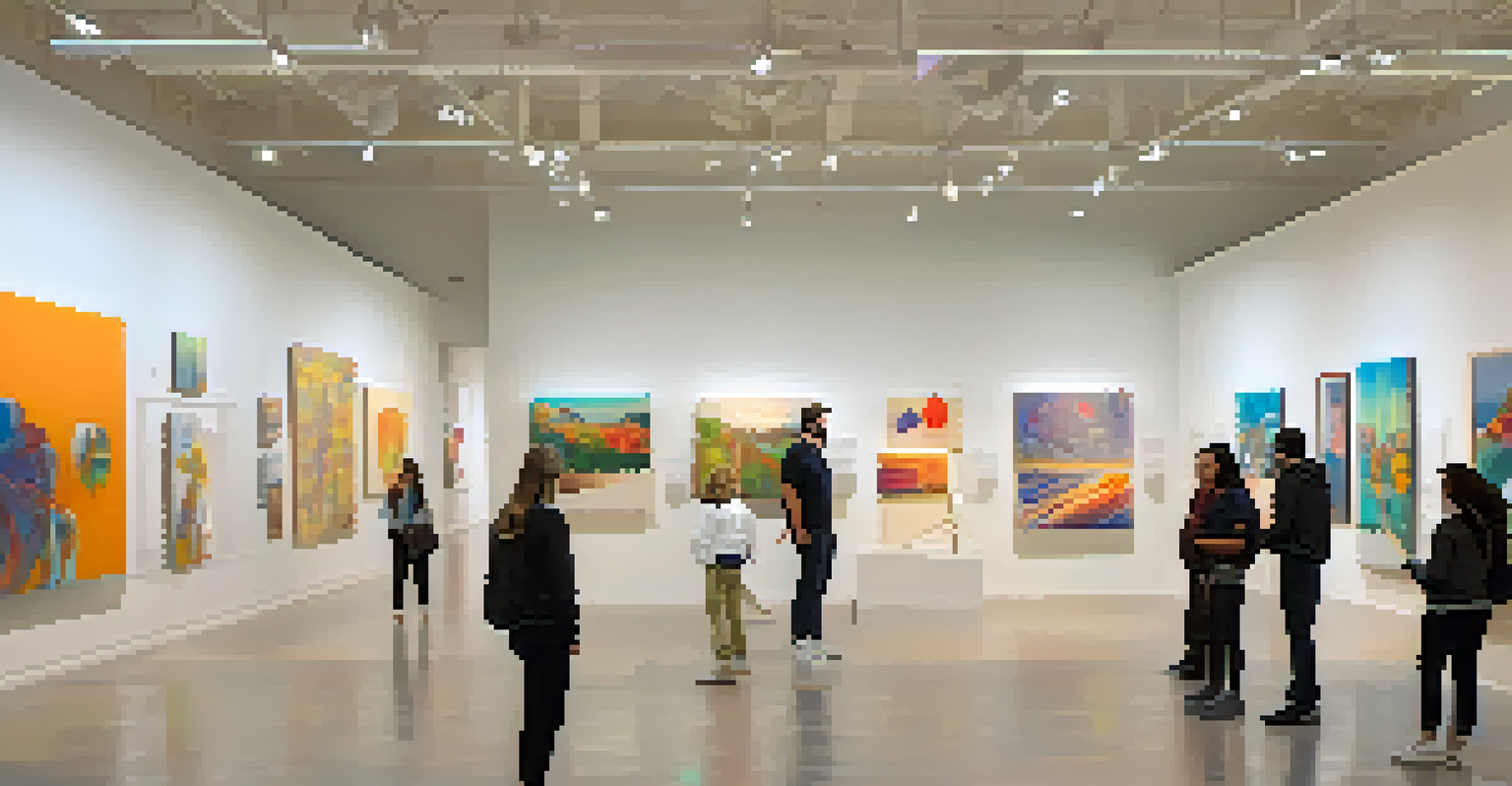The Role of Art Education in Cognitive Development for Students

Understanding Cognitive Development in Students
Cognitive development refers to the progression of thinking skills and intellectual abilities as children grow. This includes how they learn, remember, and solve problems. Art education plays a crucial role in fostering these skills by encouraging creative thinking and expression.
Every artist was first an amateur.
For instance, when students engage in creating art, they must make decisions, envision outcomes, and analyze their techniques. These processes stimulate their minds, helping them develop critical thinking skills that are essential in academic and real-world scenarios.
Moreover, art education nurtures emotional intelligence, which is closely tied to cognitive development. Students learn to interpret emotions through their artwork, enhancing their ability to understand and empathize with others.
The Connection Between Art and Brain Development
Engaging in art activates various areas of the brain, promoting growth and connectivity. Studies have shown that visual arts stimulate the right hemisphere, which is responsible for creativity and intuition, while also engaging the left hemisphere for logical reasoning.

For example, when a child paints or sculpts, they are not only expressing themselves but also developing spatial awareness, memory, and analytical skills. Each stroke of the brush or shape of the clay requires thought and precision, which exercises the brain much like a workout does for the body.
Art Boosts Cognitive Skills
Engaging in art enhances critical thinking and problem-solving abilities, essential for academic success.
This multi-faceted engagement enhances neural pathways, leading to better overall cognitive performance. As a result, students who participate in art education often show improvements in other academic subjects as well.
Art Education and Problem-Solving Skills
One of the most valuable skills students can gain from art education is problem-solving. When creating art, students face challenges such as how to combine colors or how to represent a concept visually. Navigating these obstacles cultivates resilience and adaptability.
Art is not freedom from discipline, but disciplined freedom.
Additionally, art projects often require students to collaborate, fostering teamwork and communication skills. They learn to share ideas, give constructive feedback, and approach problems from different perspectives—all critical components of effective problem-solving.
For example, a group project where students create a mural not only challenges their artistic abilities but also requires them to negotiate and resolve conflicts. These experiences translate well into academic settings and later professional environments.
Enhancing Memory through Artistic Expression
Art education can significantly enhance memory retention, making it easier for students to recall information. When students create visual representations of what they learn, they engage multiple senses, which aids in memory formation.
For instance, a student studying history might create a timeline collage that visually depicts significant events. This hands-on approach reinforces learning by providing a memorable context, making it easier to remember dates and facts.
Creativity Fuels Innovation
Art education encourages students to think creatively, leading to innovative solutions in various subjects.
Moreover, the act of creating art itself requires memory recall, as students must remember techniques and concepts they've learned previously. This process strengthens their cognitive abilities and makes learning more enjoyable.
Fostering Creativity and Innovation in Students
Creativity is a vital skill in today's world, and art education is a powerful catalyst for fostering this trait. By encouraging students to think outside the box and explore unconventional ideas, art helps them develop innovative thinking.
For example, when students are given the freedom to create without strict guidelines, they learn to trust their instincts and experiment. This exploration often leads to unique solutions and fresh perspectives on challenges they face in other subjects.
Furthermore, creative thinking nurtured through art can translate to improved performance in STEM fields, where innovation is key. Students who think creatively are often better equipped to tackle complex problems in science and technology.
Building Confidence and Self-Esteem Through Art
Art education plays a significant role in building confidence and self-esteem among students. When they create something they are proud of, it boosts their sense of achievement and encourages them to take risks.
Participation in art classes allows students to express themselves and showcase their individuality, which is vital during formative years. This sense of belonging can lead to a more positive self-image and greater overall well-being.
Art Builds Confidence and Self-Esteem
Creating art fosters a sense of achievement and self-expression, boosting students' confidence and well-being.
For instance, a student who sees their artwork displayed in a school exhibit often feels a sense of pride that motivates them to pursue new challenges, both in and outside the classroom.
The Long-Lasting Benefits of Art Education
The benefits of art education extend far beyond the classroom. Research has shown that students involved in arts education tend to perform better academically and exhibit higher levels of engagement in school.
Moreover, these skills often carry over into adulthood, influencing career paths and personal interests. Individuals who participated in art education often demonstrate greater creativity and problem-solving abilities in their professional lives.

Ultimately, investing in art education is investing in the holistic development of students, equipping them with essential skills for success in all areas of life.